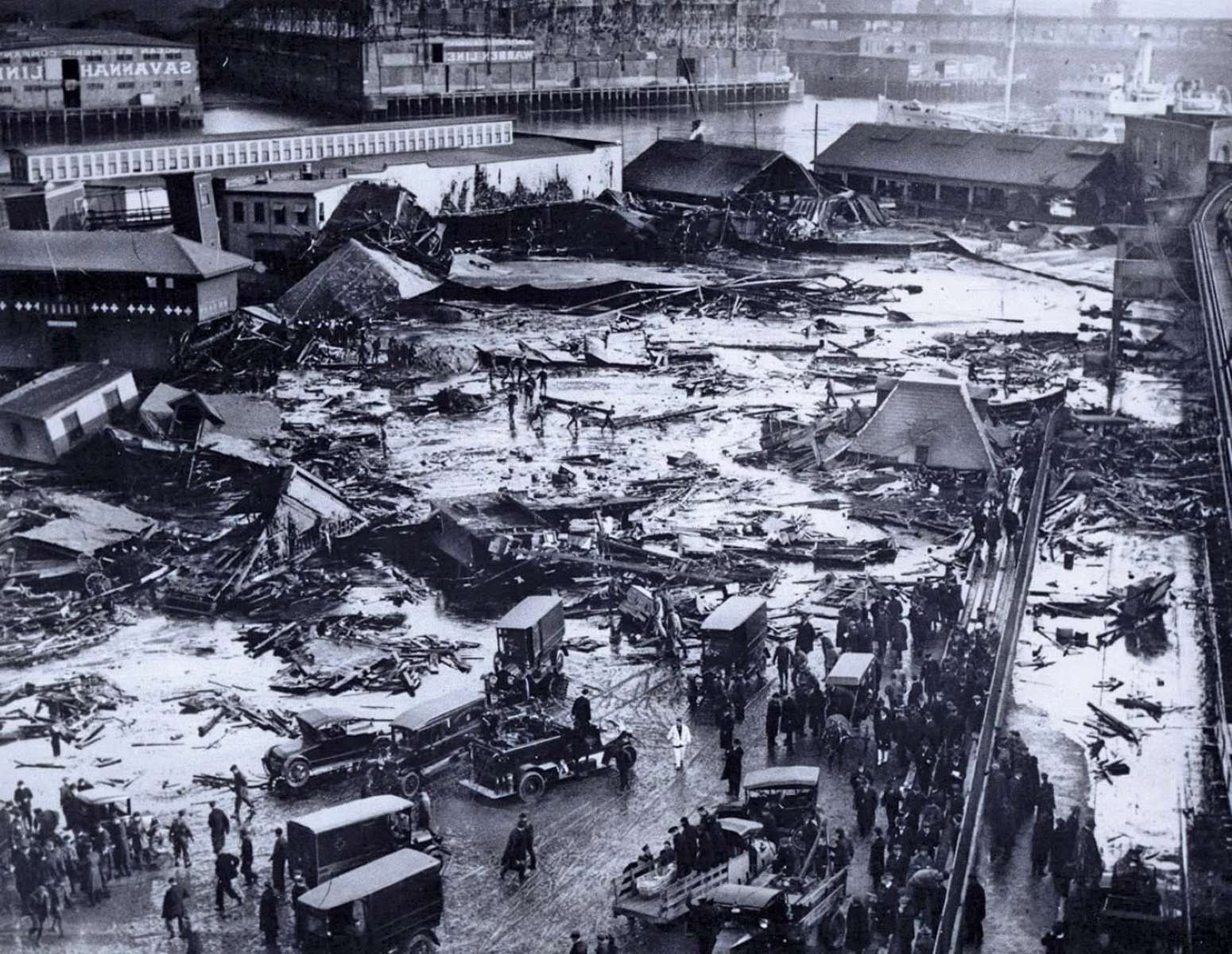
Did you know that a massive wave of molasses once swept through the streets of Boston? This bizarre event, known as the Boston Molasses Flood, occurred on January 15, 1919. A giant storage tank holding 2.3 million gallons of molasses burst, sending a sticky tsunami through the North End neighborhood. The flood caused significant damage, killing 21 people and injuring 150 others. Buildings were flattened, and the cleanup took weeks. This unusual disaster left a lasting mark on Boston's history, and its impact is still remembered today. Dive into these 34 facts about the Boston Molasses Flood to learn more about this sticky situation.
Key Takeaways:
- The Boston Molasses Flood of 1919 was a sticky disaster that caused significant damage and loss of life, leading to stricter safety regulations and a lasting impact on the community.
- The unusual event, with a wave of molasses reaching speeds of 35 mph, highlighted the importance of proper maintenance and safety standards, and remains a memorable part of Boston's history.
The Boston Molasses Flood: A Sticky Situation
The Boston Molasses Flood, also known as the Great Molasses Flood, is one of the most bizarre disasters in history. On January 15, 1919, a massive storage tank filled with molasses burst, sending a wave of sticky syrup through the streets of Boston. Here are some fascinating facts about this unusual event.
The Disaster Unfolds
The flood was sudden and unexpected, catching many off guard. The sheer volume of molasses and the speed at which it moved caused significant damage and loss of life.
- The tank held about 2.3 million gallons of molasses.
- The wave of molasses reached speeds of up to 35 mph.
- The flood killed 21 people and injured around 150 others.
- Buildings were swept off their foundations by the force of the molasses.
- The disaster caused an estimated $100 million in today's dollars in damages.
The Aftermath
Cleaning up the mess left by the flood was a monumental task. The sticky molasses coated everything, making it difficult to remove and causing long-term issues for the city.
- It took weeks to clean the streets of Boston.
- The cleanup involved hundreds of workers using saltwater and sand.
- The molasses seeped into the harbor, turning the water brown for months.
- The smell of molasses lingered in the area for years.
- The event led to stricter regulations on the construction and maintenance of storage tanks.
The Science Behind the Flood
Understanding why the tank burst and how the molasses behaved during the flood has been a topic of scientific interest. The properties of molasses and the conditions on that fateful day played a significant role in the disaster.
- Molasses is denser than water, making it more destructive when moving at high speeds.
- The tank was poorly constructed, with thin walls and inadequate rivets.
- The temperature on the day of the flood was unusually warm for January, causing the molasses to flow more easily.
- The tank had been filled to capacity just days before the disaster.
- Fermentation inside the tank may have increased pressure, contributing to the burst.
Legal and Social Implications
The Boston Molasses Flood had far-reaching legal and social consequences. The disaster highlighted the need for better safety standards and had a lasting impact on the community.
- The company that owned the tank, United States Industrial Alcohol, faced numerous lawsuits.
- The legal battles lasted for years, with the company eventually paying out millions in settlements.
- The disaster led to changes in building codes and safety regulations nationwide.
- Many of the victims were Italian immigrants, highlighting issues of social inequality.
- The flood became a symbol of corporate negligence and the need for accountability.
The Human Stories
Behind the statistics and scientific facts, there are human stories of tragedy, heroism, and resilience. The flood affected the lives of many people in profound ways.
- Firefighters and police officers risked their lives to rescue those trapped in the molasses.
- Some survivors were trapped in the sticky syrup for hours before being rescued.
- Many of the injured suffered from broken bones and other serious injuries.
- The community came together to support the victims and their families.
- The disaster inspired books, documentaries, and even songs, keeping the memory of the event alive.
The Legacy of the Boston Molasses Flood
The Boston Molasses Flood remains a unique and memorable event in history. Its legacy continues to be felt in various ways, from safety regulations to cultural references.
- The site of the flood is now a park with a plaque commemorating the event.
- The flood is often used as a case study in engineering and safety courses.
- It has been referenced in popular culture, including TV shows and movies.
- The event is a reminder of the importance of proper maintenance and safety standards.
- The flood has become a part of Boston's rich history and folklore.
Unusual Facts
Some aspects of the Boston Molasses Flood are so unusual that they almost seem unbelievable. These quirky facts add another layer of intrigue to the story.
- The molasses wave was reported to be 25 feet high at its peak.
- Some residents claimed they could still smell molasses on hot days decades later.
- The tank had leaked molasses for years before the disaster, but the company painted it brown to hide the leaks.
- The flood occurred just after lunchtime, so many people were outside and directly in the path of the molasses wave.
The Sticky Aftermath
The Boston Molasses Flood of 1919 left a lasting mark on the city. This bizarre disaster, caused by a massive tank failure, released over 2 million gallons of molasses into the streets. The sticky wave claimed 21 lives, injured 150, and caused significant property damage. Cleanup efforts took weeks, and the event led to stricter regulations for industrial storage tanks.
Today, the flood remains a curious chapter in Boston's history. It serves as a reminder of the importance of proper engineering and safety standards. The site of the disaster, now a quiet neighborhood, still carries the memory of that fateful day.
So, next time you're in Boston, take a moment to remember the molasses flood. It's a sticky story that continues to fascinate and educate.
Frequently Asked Questions
Was this page helpful?
Our commitment to delivering trustworthy and engaging content is at the heart of what we do. Each fact on our site is contributed by real users like you, bringing a wealth of diverse insights and information. To ensure the highest standards of accuracy and reliability, our dedicated editors meticulously review each submission. This process guarantees that the facts we share are not only fascinating but also credible. Trust in our commitment to quality and authenticity as you explore and learn with us.


